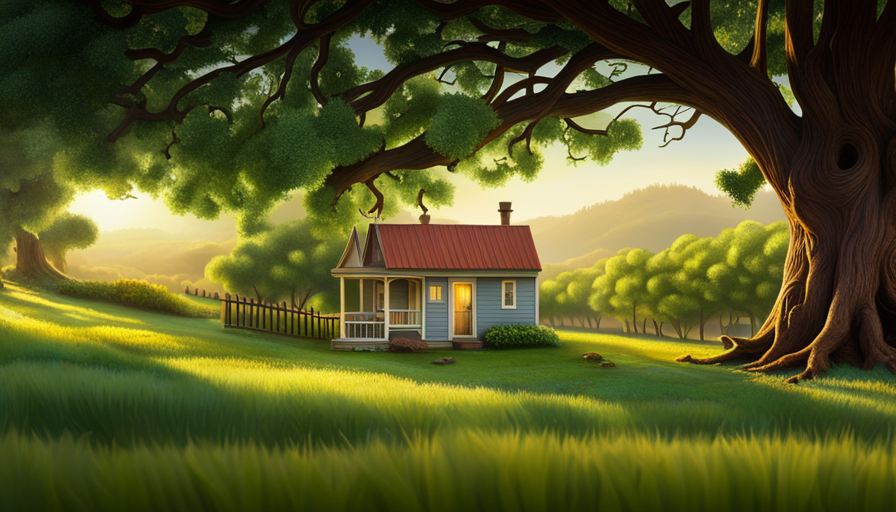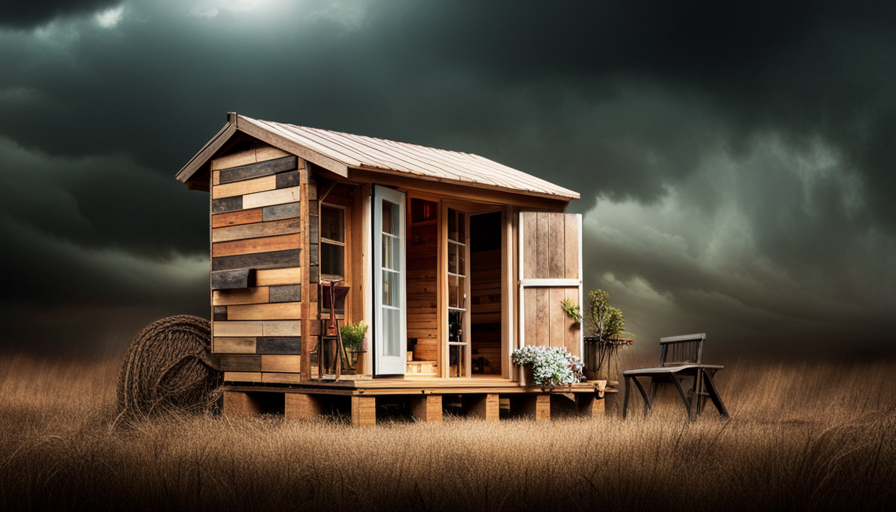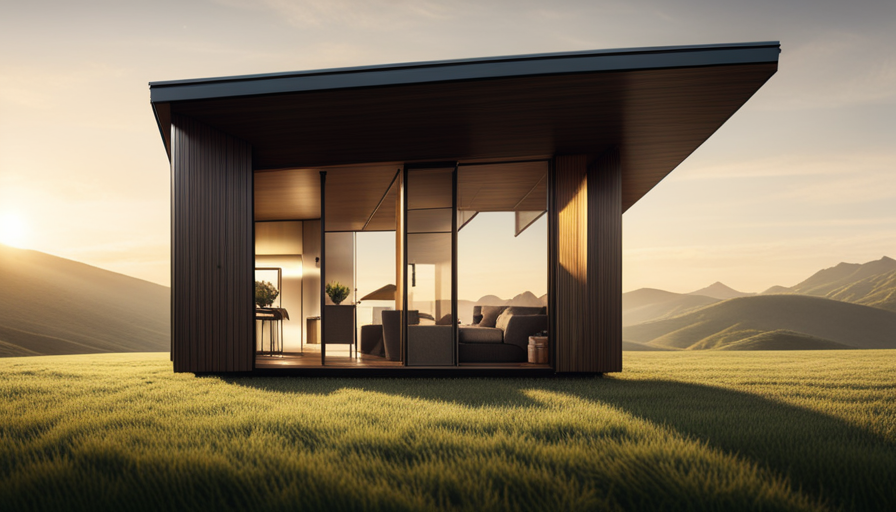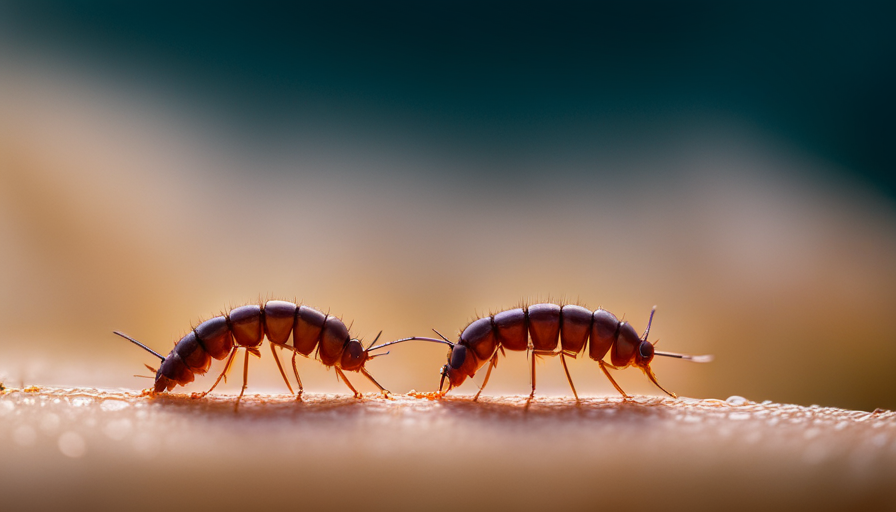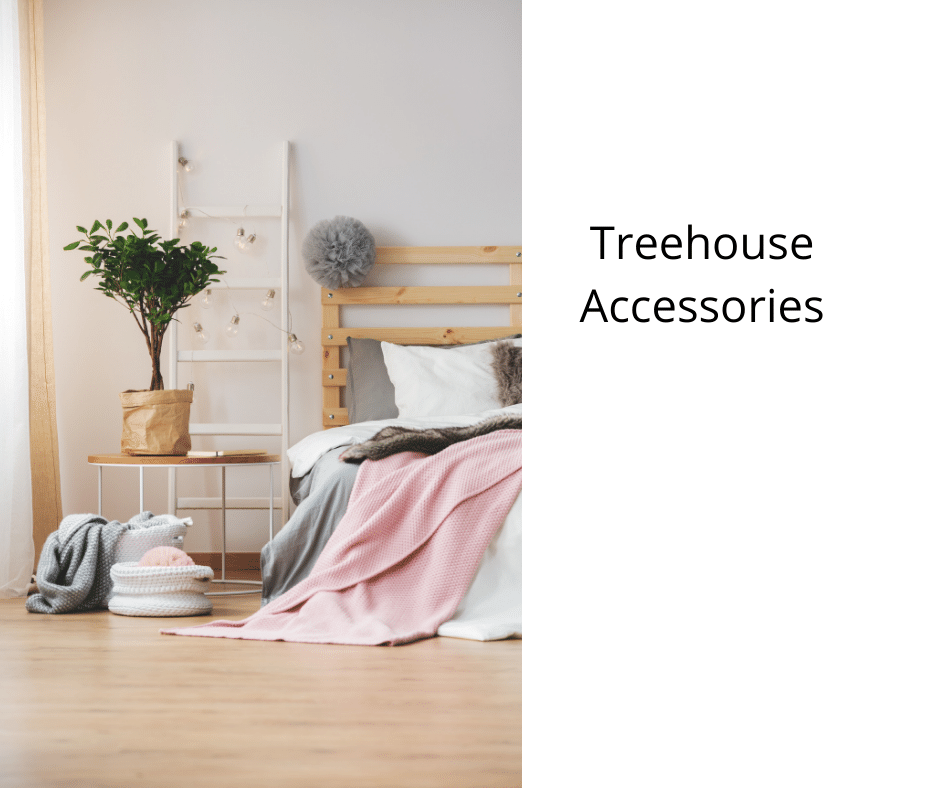Have you ever dreamed of living in a cozy, minimalist space that is completely yours? Look no further, because tiny house trailers are the answer. These compact, mobile homes are gaining popularity as people seek simplicity and freedom from the burdens of traditional homeownership. But just how big are these tiny house trailers in reality?
Imagine a space that is both compact and efficient, where every square inch is carefully designed to maximize functionality. Picture a home on wheels that allows you to travel and explore, while still providing all the comforts of a traditional house. Tiny house trailers offer just that.
In this article, we will delve into the world of tiny house trailers, exploring their interior space, mobility and transportation options, customization possibilities, and even tips for off-grid living. We will also discuss budgeting and financing options, as well as the unique challenges and benefits of living in a tiny house trailer.
So, if you’re ready to downsize and simplify your life, join me as we uncover the wonders of tiny house trailers and discover just how big these little homes can be.
Key Takeaways
- Tiny house trailers range from 12 to 30 feet in length and are made of steel or aluminum.
- The weight of the trailer is determined by the construction materials and the size/weight of the tiny house.
- Interior space of tiny house trailers is carefully utilized to maximize storage and optimize layout, with built-in shelving and hidden storage.
- Tiny house trailers are designed to be lightweight for easier towing and maneuverability on the road, with weights typically ranging from 3,000 to 10,000 pounds.
Understanding the Basics of Tiny House Trailers
You’ll be amazed at how compact and cozy tiny house trailers can be! Understanding trailer weight is crucial when choosing the right trailer size for your tiny house.
Trailers come in various sizes, typically ranging from 12 to 30 feet in length. The weight of the trailer is determined by its construction materials, such as steel or aluminum, as well as the size and weight of your tiny house. It’s important to choose a trailer that can safely support the weight of your tiny house and provide a stable foundation.
Additionally, considering the weight distribution and axle placement is essential to ensure proper towing and maneuverability.
Exploring the interior space is the next step to fully appreciate the functionality and design of tiny house trailers.
Exploring the Interior Space
Immerse yourself in the cozy and efficient world of these compact mobile abodes. Inside a tiny house trailer, every inch of space is carefully utilized to maximize storage and optimize the layout. Here’s how:
-
Built-in Shelving: Utilize vertical space by incorporating built-in shelves along the walls. These shelves can be used to store books, kitchen utensils, or decorative items, freeing up valuable floor space.
-
Hidden Storage: Take advantage of hidden storage options, such as under-bed compartments or pull-out drawers beneath seating areas. These clever storage solutions help keep the interior clutter-free.
-
Multi-functional Furniture: Invest in multi-functional furniture pieces that serve multiple purposes. For example, a sofa that can be converted into a bed or a table that can be folded and stored away when not in use.
-
Smart Organizers: Use organizers like hanging shoe racks or over-the-door storage pockets to make the most of small spaces. These organizers can be attached to walls or doors, providing additional storage for small items.
By maximizing storage and optimizing the layout, tiny house trailers offer a surprisingly spacious and functional living environment. Now, let’s consider the mobility and transportation aspect of these unique dwellings.
Considering Mobility and Transportation
Embark on a journey that transcends physical boundaries and unlocks the freedom to explore the world with these compact mobile abodes. When considering the mobility and transportation of tiny house trailers, it’s important to take into account their weight and road regulations.
Tiny house trailers are designed to be lightweight, allowing for easier towing and maneuverability on the road. The weight of these trailers typically ranges from 3,000 to 10,000 pounds, depending on the size and materials used. It’s crucial to adhere to road regulations, such as speed limits and size restrictions, to ensure safe and legal transportation.
By understanding the trailer weight and road regulations, you can confidently navigate the highways and byways in your tiny house on wheels.
Transitioning into the subsequent section about customizing your tiny house trailer, let’s explore the endless possibilities of creating a personalized space that suits your unique needs and style.
Customizing Your Tiny House Trailer
Get ready to personalize your compact mobile abode on wheels and create a space that perfectly reflects your unique style and needs. When it comes to customizing your tiny house trailer, the options are endless.
From choosing the layout and materials to selecting the appliances and fixtures, you have the freedom to design every aspect of your tiny home. To maximize space, consider built-in storage solutions such as hidden cabinets, foldable furniture, and multi-functional pieces. Utilize vertical space by installing shelves and hooks on the walls.
Additionally, don’t forget about the exterior customization options, such as choosing the color and style of the siding, roofing, and windows. By customizing your tiny house trailer, you can create a cozy and functional space that suits your lifestyle.
Now, let’s dive into planning for off-grid living and ensuring your tiny home is self-sufficient.
Planning for Off-Grid Living
Prepare to design a self-sufficient and eco-friendly space as you envision a life off the grid within your customized mobile abode. To achieve this, consider the following sustainable energy options:
-
Solar Power: Install solar panels on your tiny house trailer to harness the sun’s energy and power your electrical needs. This renewable energy source is environmentally friendly and can greatly reduce your carbon footprint.
-
Rainwater Harvesting: Implement a system to collect rainwater, which can be used for various purposes such as showering, washing dishes, and watering plants. This not only minimizes your reliance on municipal water supply but also reduces water waste.
-
Composting Toilets: Opt for a composting toilet system that converts human waste into nutrient-rich compost. This eliminates the need for traditional plumbing and sewage systems, reducing your environmental impact.
By incorporating these sustainable energy options and minimizing your environmental impact, you can create an off-grid lifestyle that is both eco-friendly and self-sufficient. As you consider these aspects, it’s also crucial to explore budgeting and financing options to bring your vision to life seamlessly.
Budgeting and Financing Options
While delving into the world of off-grid living, it’s essential to explore budgeting and financing options, just like navigating through a labyrinth of financial possibilities.
When it comes to financing a tiny house trailer, there are several loan options available. Some banks offer specific loans for tiny houses, while others may provide personal loans or RV loans. It’s important to research and compare interest rates, repayment terms, and eligibility criteria to find the best option that suits your needs.
Additionally, creating a cost breakdown is crucial to understanding the expenses involved in building and living in a tiny house trailer. Consider factors such as materials, appliances, utilities, and ongoing maintenance costs.
By carefully budgeting and exploring financing options, you can ensure that your off-grid lifestyle is both sustainable and affordable.
Transitioning into the subsequent section about ‘tips for living in a tiny house trailer,’ it’s important to consider the practical aspects of daily life in a small space.
Tips for Living in a Tiny House Trailer
Living in a compact and mobile dwelling requires clever organization and creative storage solutions to maximize space and create a cozy and functional living environment. Here are some tips to make the most out of your tiny house trailer:
-
Utilize vertical space: Install shelves, hooks, and hanging organizers on the walls to store items such as books, kitchen utensils, and clothing.
-
Opt for multi-purpose furniture: Invest in furniture that serves multiple functions, like a sofa that can be converted into a bed or a coffee table with hidden storage compartments.
-
Choose foldable appliances: Look for appliances that can be easily folded and stored away when not in use, such as folding chairs or collapsible tables.
-
Consider built-in storage solutions: Maximize storage by incorporating built-in cabinets, drawers, and closets throughout your tiny house trailer.
By implementing these strategies and choosing the right appliances, you can effectively maximize storage and create a practical and comfortable living space in your tiny house trailer.
Frequently Asked Questions
What are the legal requirements for towing a tiny house trailer?
To legally tow a tiny house trailer, there are several requirements you must meet.
First, you’ll need to ensure that your tow vehicle is capable of safely towing the weight of the trailer.
Additionally, you’ll need to have the appropriate driver’s license for the combined weight of the trailer and the tow vehicle.
In most states, you’ll also need to have proper lighting and safety equipment, such as working brake and signal lights.
Overall, it’s crucial to familiarize yourself with your state’s specific regulations to ensure compliance and safe towing.
Can a tiny house trailer be parked permanently in a residential neighborhood?
Parking regulations and community acceptance play a crucial role in determining whether a tiny house trailer can be parked permanently in a residential neighborhood. While some neighborhoods may have zoning restrictions that prohibit permanent parking of tiny houses, others may have specific guidelines and regulations in place.
It’s essential to research and understand the local parking regulations and engage in open communication with the community to ensure the acceptance and compliance of parking a tiny house trailer permanently in a residential area.
Are there any restrictions on the height or width of a tiny house trailer?
There are absolutely no restrictions on the height or width of tiny house trailers. You can go wild and build a towering masterpiece or a wide wonder. However, it’s important to consider practicality and transportation regulations. Keep in mind that taller or wider trailers might require special permits and could be more challenging to tow. So, while the sky’s the limit, it’s best to stay within reasonable dimensions for easier mobility.
How much weight can a tiny house trailer support?
A tiny house trailer’s weight capacity depends on its design and construction. Generally, these trailers can support a range of weights, typically from 10,000 to 18,000 pounds. However, it’s important to consider the dimensions of the tiny house trailer as well. The weight capacity may vary based on the size and structural integrity of the trailer.
It’s crucial to consult the manufacturer’s specifications to ensure that the weight of your tiny house is within the trailer’s limits.
Are there any special considerations for insuring a tiny house trailer?
When it comes to insuring a tiny house trailer, there are a few special considerations to keep in mind. First, it’s important to understand the costs involved in insuring a tiny house trailer. Factors such as the value of the trailer, location, and your personal insurance history can all impact the insurance coverage and premiums.
Additionally, it’s crucial to ensure that your insurance policy provides adequate coverage for both the trailer itself and any belongings inside.
Conclusion
In conclusion, living in a tiny house trailer offers a unique and cost-effective way to experience a minimalist lifestyle. With an average size ranging from 20 to 24 feet, these trailers provide compact yet functional living spaces.
Interestingly, according to a recent survey, over 60% of tiny house owners reported a decrease in their overall expenses after transitioning to this lifestyle. This statistic highlights the financial freedom and sustainability that can be achieved through tiny house living.
So, if you’re seeking a simpler and more affordable way of life, a tiny house trailer may just be the perfect fit for you.
Hi, I’m Emma. I’m the Editor in Chief of Tiny House 43, a blog all about tiny houses. While tree houses are often associated with childhood, they can be the perfect adult retreat. They offer a cozy space to relax and unwind, surrounded by nature. And since they’re typically built on stilts or raised platforms, they offer stunning views that traditional homes simply can’t match. If you’re looking for a unique and romantic getaway, a tree house tiny house might just be the perfect option.

